CarEdge saved me over 4,500 dollars on a brand new Honda Pilot. I can't say thank you enough.
Price intelligence
Find a wide range of vehicle listings with market insights on new and used listings near you.


Help us personalize your CarEdge experience — it only takes a second.
Your answers help us personalize your CarEdge journey — we’ll follow up with tips and next steps that match your buying timeline.
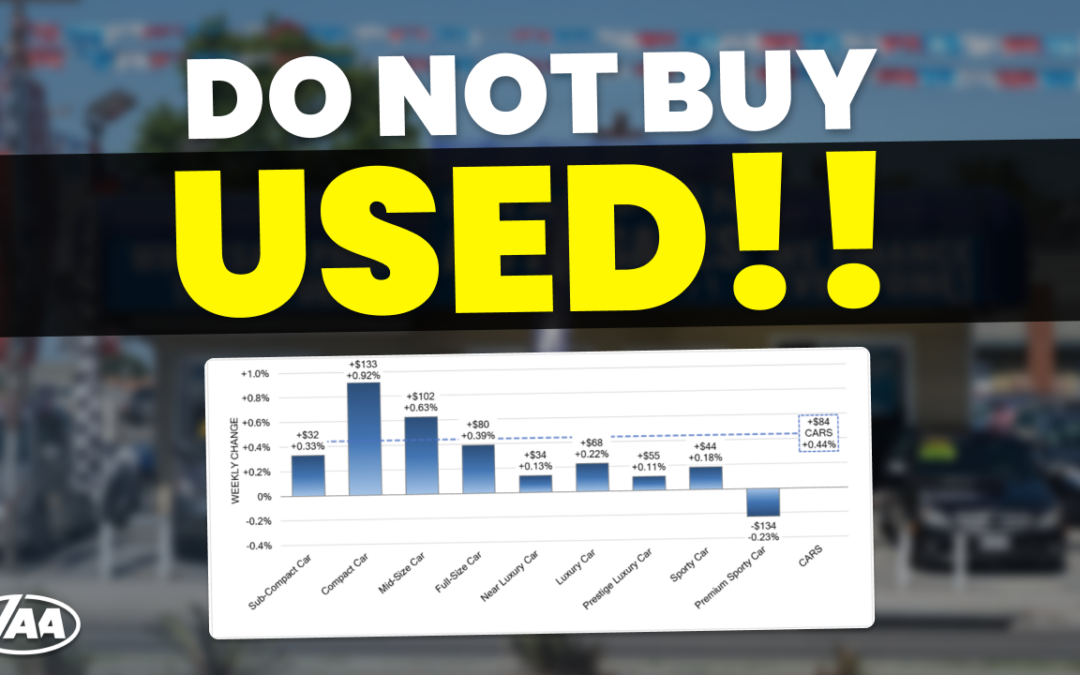
Buying a car in 2022 is hard. Deciding if you should buy a new or used vehicle is even more difficult. Used car prices have increased unlike any other time in history, and the new car shortage means you may need to wait months to take delivery of an ordered vehicle.
While in years past the answer to “should I buy a new or used car” was more obvious, today it is trickier to answer. Let’s break down the pros and cons of buying new and used and what our recommendation is here at CarEdge.
Let’s dive in.
You might feel a little crazy if you buy a new car in 2022 … Just a few years ago, the idea of paying MSRP for a new car was unheard of. Today, paying MSRP is a deal.
Car dealers nationwide have been adding additional dealer markups (ADMs) to their vehicles. For many brands, the average transaction price is well above the original vehicle’s MSRP.
If new cars are selling for more than MSRP, how could it possibly make sense to buy one in this market? The case is quite simple; if you can find a dealership who will sell you a vehicle at MSRP (and in some cases below it), then you should jump on it.
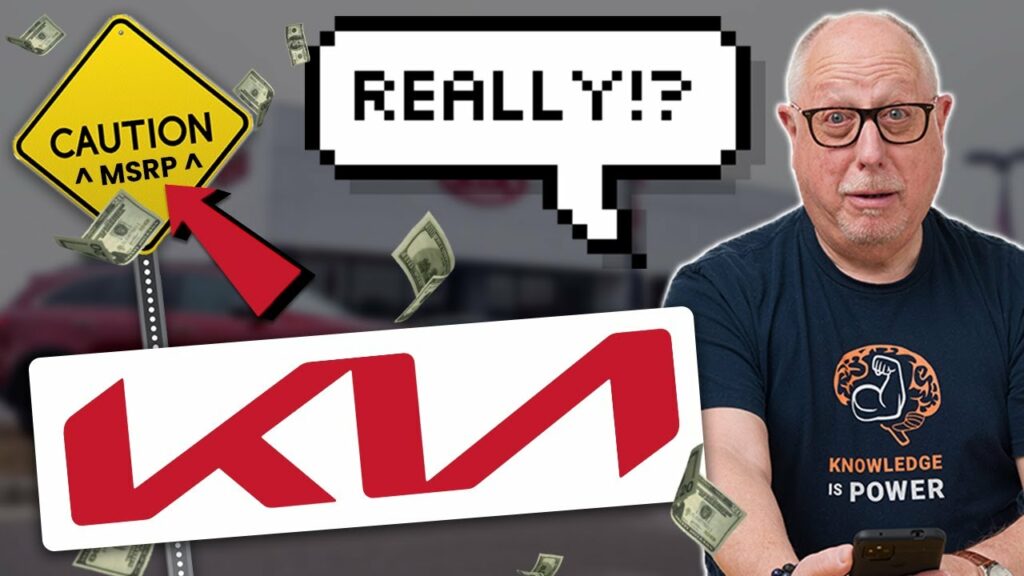
It is widely expected that automakers will significantly increase their MSRPs for the 2023 model year. We have already seen many manufacturers increase MSRPs during the 2022 model year.
Pair this with the reality that used vehicles are appreciating assets, and you can begin to see why purchasing a 2022 new vehicle at MSRP is a relative “bargain”. New vehicles come with the full manufacturer warranty and typically are eligible for special financing through the manufacturer’s lending arm. Used vehicles are selling for the same price as new vehicles and they don’t have those benefits. For this reason, if you can find a dealership selling a vehicle at MSRP we recommend you strongly consider it.
To find a dealership selling at MSRP we encourage you to search our community-driven dealership reviews. Research over 1,700 reviews that have been submitted by other community members.
What is the rationale for buying a used car in 2022? Price. If you cannot afford a new vehicle (which is understandable since the average transaction price in April 2022 was $42,000), then older used cars become your only option.
Sadly, 8-16 year old used cars have seen the most rapid price appreciation so far in 2022. This is because many people are looking for under $20,000 price-point vehicles and their only options are older used cars.
If you are looking for a vehicle in this price range it is critically important that you do your due diligence before purchasing it. Pre-purchase inspections are non-negotiable in today’s market. We have heard many horror stories of “junk” cars being sold to consumers, and the best way to protect yourself from that happening is to get an inspection done before you purchase.
Not all used cars have appreciated equally. Gas guzzler vehicles have depreciated in 2022, while compact and subcompact sedans have appreciated. The trade off here is obvious; save money by spending less on gas guzzler vehicle, but spend more on fuel, or spend more on a more fuel efficient smaller car and save on fuel.
Buying a used car in today’s market is incredibly challenging.
If you’re reading this blog post, the odds are high that you already knew it is a tough time to buy a new or used car. Unlike in years past where the financially prudent decision was to buy a used car, we think it makes more sense to buy a new vehicle in 2022. While that’s easier said than done, we think it will pay off in the long run.
If you cannot afford a new vehicle, then finding a used vehicle that passes a pre-purchase inspection is your best bet.
As always we recommend going through Deal School before you contact any seller, and please don’t hesitate to post on the free community forum to get help. It’s a challenging market, but we’re here to help.


Maryland Attorney General Brian E. Frosh announced that his office’s Consumer protection Division has reached a settlement with Koons Kia of Owings Mills, MD to address allegations of the systematic practice of forcing customers to pay for hidden fees and phony freight charges.
The settlement requires Koons Kia to stop charging car buyers fees, other than taxes or title
fees, if the fees were not included in the advertised price for a vehicle. The dealership also
agreed not to charge consumers for shipping if freight charges were already included in the advertised price for the vehicle.
Koons Kia agreed to return all fees it collected from consumers other than taxes and title fees that were not included in the advertised price of the vehicle, as well as all freight charges that were already included in the advertised price of the vehicle.
Attorney General Frosh estimates that more than $1 million will be returned to consumers. Koons Kia also agreed to pay the Consumer protection Division $100,000 for the costs associated with the investigation.
“Car dealers must honor the price they advertise for their vehicles,” said Attorney General Frosh.
“I am glad that Maryland consumers will receive refunds for the fees that they paid above the
advertised price.”
Consumers who are owed refunds under the settlement will be contacted directly by the Maryland Attorney General’s Consumer protection Division.
Tales of dishonest pricing and unfriendly dealer tactics are unfortunately commonplace. That’s why CarEdge exists; to put car buyers back in control of their purchase. If you or anyone you know have experienced something similar to what happened to customers of Koons Kia, please see our new resource on how to contact your state’s attorney general office and consumer protection division.
Dealers take complaints filed with the attorney general’s office very seriously, and this serves as a reminder why.
If you’re still shopping for a new or used vehicle, follow these steps to push back against forced dealer add-ons.
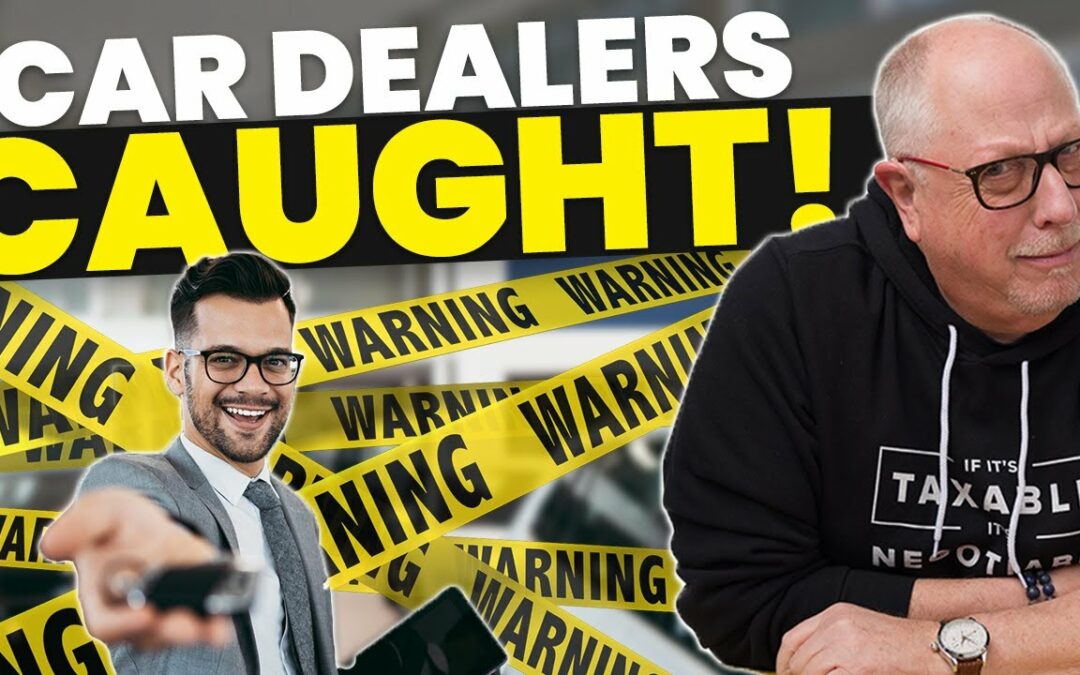
At CarEdge, we recently shared the steps you can take to challenge dealer add-ons, but what if it’s too late? When do misleading pricing, forced add-ons and financing games cross legal boundaries? Does the consumer have any recourse? Here’s what you need to know, and how you can file a complaint against a car dealer.
Did a dealer sneak fees or add-ons into the contract after you agreed upon the price? Were there two versions of the final paperwork, one with add-ons that you weren’t supposed to see? Did someone in the finance office tell you that you could only secure financing if you purchased a product? These are all justifiable reasons for filing a complaint.
Where should you start? Before paperwork is signed, follow these steps to push back and demand transparency. If the car has already been bought and driven off the lot and the dealership management refuses to right their wrongs, filing a complaint with the state attorney general’s office will surely get their attention.
Here’s how to contact your state’s attorney general to file a complaint against a car dealer in all 50 states, DC and Puerto Rico:
Dealerships would rather not become the subject of legal action, so the mere mention of filing a complaint with the attorney general could be the motivation they need to make things right for you. If the state consumer protection agency receives too many complaints about a particular dealership or dealer group, the whole business can ultimately be at stake.
Keep your auto advocates at CarEdge in the loop if you’re thinking about filing a complaint. Don’t forget to leave a review of the dealership you worked with at CarEdge Car Dealer Reviews to let others know what you experienced.
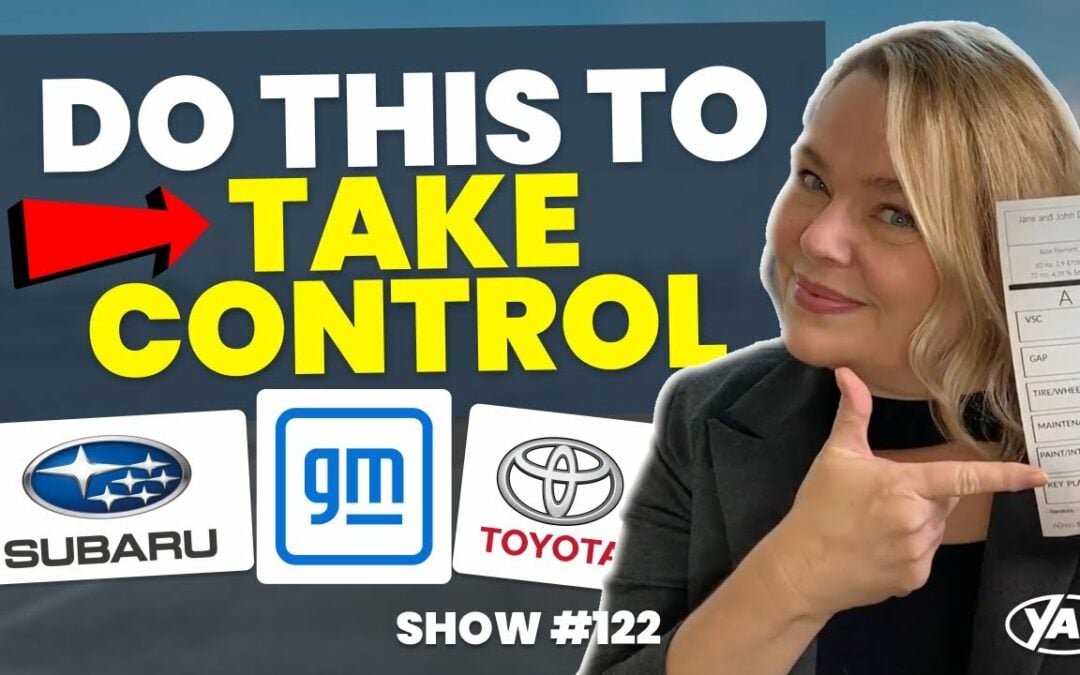
When purchasing a new vehicle, navigating the world of dealer add-ons can be a confusing and sometimes costly experience. These extra features, services, or accessories may be presented as essential or highly beneficial, but they often come with a hefty price tag. In this comprehensive guide, we will demystify dealer add-ons, helping you understand their true value and make informed decisions during your car-buying journey. From extended warranties to paint protection, learn how to challenge dealer add-ons and avoid paying for unnecessary extras, ultimately saving you money on your new vehicle purchase.
Say you’ve found the perfect car or truck, and it’s listed ‘at MSRP’, or maybe even a bit less. You think you’re in for a good deal, and you’re aware that it can be hard to come by in 2023. The salesperson is talking it up, and it’s working.
As you start to talk numbers at the sales desk, they slyly mention the paint protection, theft protection, etching, door guards and nitrogen-inflated tires. Maybe even some pinstripes. These ‘forced’ front-end dealer add-ons are going to cost you $2,000, but he says not to worry, every car at the dealership has these ‘products’ added. Supposedly, they can’t be removed, and refusal to pay for them could be a deal-breaker.
What do you do next? These are the steps to take when confronted with front-end dealer add-ons.

When buying a car, the contract should work in your favor. Every dealer add-on does come with a contract. However, the dealership may ‘assume’ that you’re not interested in reading it.
When presented with the product contract, you have three surprisingly simple options:
The add-on product’s contract will say in bold that it is VOLUNTARY and NOT NECESSARY to obtain financing. Here’s proof. Point that out, and be clear and direct. This is not the time to beat around the bush. It might even have a declination box where you can sign that you reject the product offered.
Remember, you can get most dealer add-ons for hundreds of dollars less elsewhere. That dealer quoting you $400 for pinstripes will pretend they don’t know you can get them on your own for $100. Or, that anti-theft etching costs just $20 (not the $300 they’ll charge you).
The salesperson or sales manager may refuse to budge at this point. Well, they’re not forcing you to sign the contract, so don’t! Tell them you’re prepared to walk away and take your business elsewhere if these add-ons aren’t removed from the purchase order.
Make sure you receive a copy of the product contract whether you buy it or decline it. It’s part of dealership compliance, so they can’t say no. And voila! You’ve done your documentation due diligence.
Understandably, it’s a hassle to leave a deal so late in the game and start over again elsewhere. But is avoiding the hassle really worth the markup the dealer is demanding, often over $3,000, maybe even $5,000? It’s your financial decision, and you’re in control. It’s time to empower your buying experience by demanding transparency from the dealer.
Remember the most direct path to transparency when confronted with forced dealer add-ons is to demand to see the contract for each add-on. The same is true when canceling or rejecting an extended warranty at the dealership.
Have Questions That Need Answers? CarEdge Advocates Are Here For You
Learn more about how our team of Car Coaches is ready to help you negotiate a better deal today. Yes, that includes dealer add-ons. We save customers thousands of dollars every day by doing just that! Check out these CarEdge success stories.
Let us know what you think, and what you’ve experienced buying a car. Don’t forget to join the CarEdge Community, where you can find one-on-one car buying advice, the latest car reviews, and thousands of consumers just like you who are looking for the best deals with the least hassle. We can’t wait to meet you.
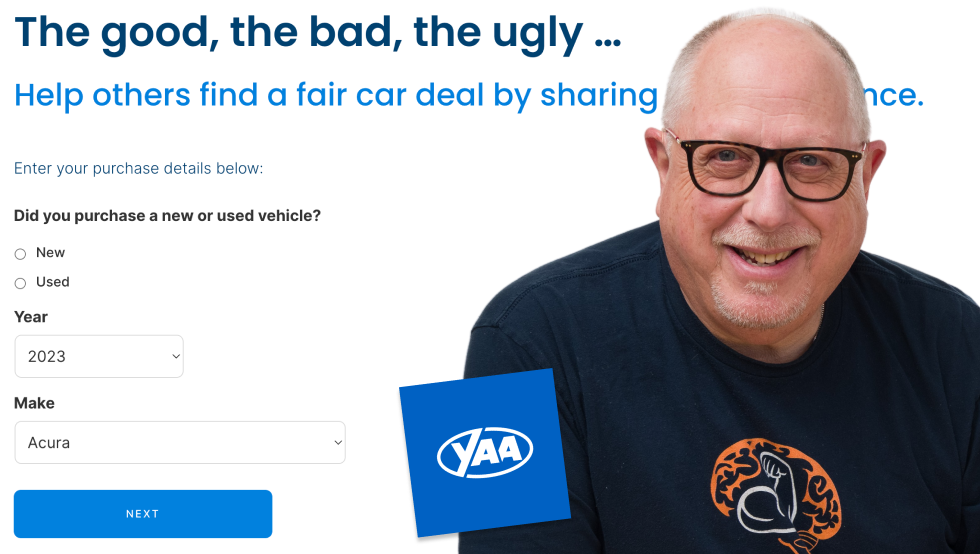

Buying from a dealership can be a stressful, painful experience in 2023. If you’re on the hunt for a good deal, chances are you have experienced this frustration firsthand.
What if there was a way to rate and review car dealers so that buyers can cut through the clutter (and rip-offs) and reward honest, fair dealers with their business? The CarEdge team saw the need for a one-stop shop for dealer reviews, so we made it a reality. We’re thrilled to introduce CarEdge Dealer Reviews.
With thousands of dealer and deal reviews and counting, consumers are eager to have their voices heard, and even more determined to help others navigate today’s hectic car buying process.
When submitting your own dealer rating, CarEdge’s Dealer Reviews will ask basic questions about the vehicle you’ve purchased. In addition to sharing the make and model of your new auto, you can tell the world if the dealer is charging above MSRP, requiring dealer add-ons, and simply treating customers with respect and good business practices.
With your contributions, we hope that CarEdge Dealer Reviews will help car buyers feel in control of their next vehicle purchase.

At CarEdge, we value honesty and transparency. There’s no room for ‘sponsored reviews’ or hidden agendas, we all know there’s an abundance of misleading advertising already out there. That’s why CarEdge fully vets every dealer review that is submitted. Thank you for putting your trust in CarEdge’s consumer advocates.
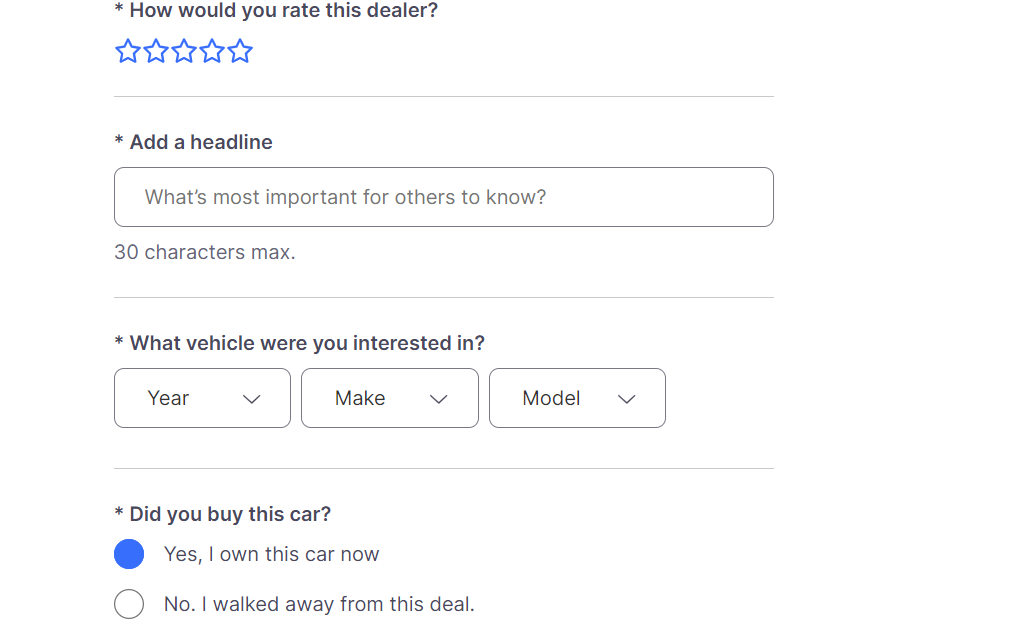
We make it easy for you to have your voice heard, and to make a difference in the car buying experience.
Did you have a great experience buying your car? Or maybe you’ve had a disappointing experience, and you want to warn others. Please, share your experience with the community. Add your own dealer rating today!
CarEdge Dealer Reviews takes the guesswork out of the dealership experience. Check out our growing database of dealer reviews to see the good, the bad, and the ugly! More auto dealers are added to our reviews daily.
If you’re just as excited as we are about this, consider joining the CarEdge Community to access countless car buying tips from veterans of the auto industry, as well as over 100,000 members who’ve joined together to empower the consumer and spread love for autos.